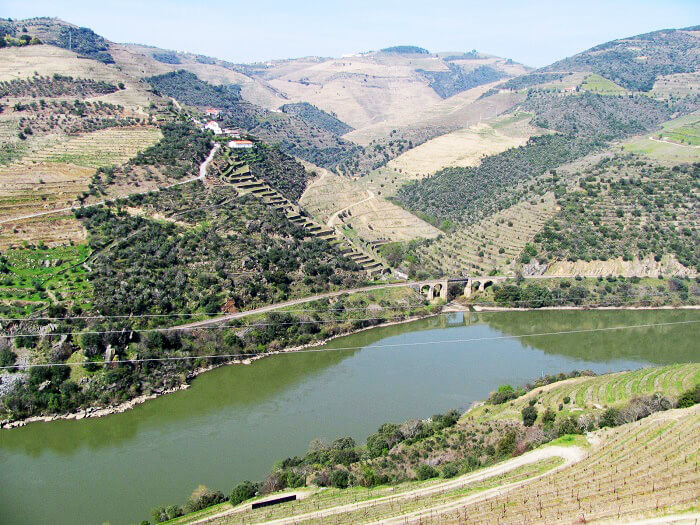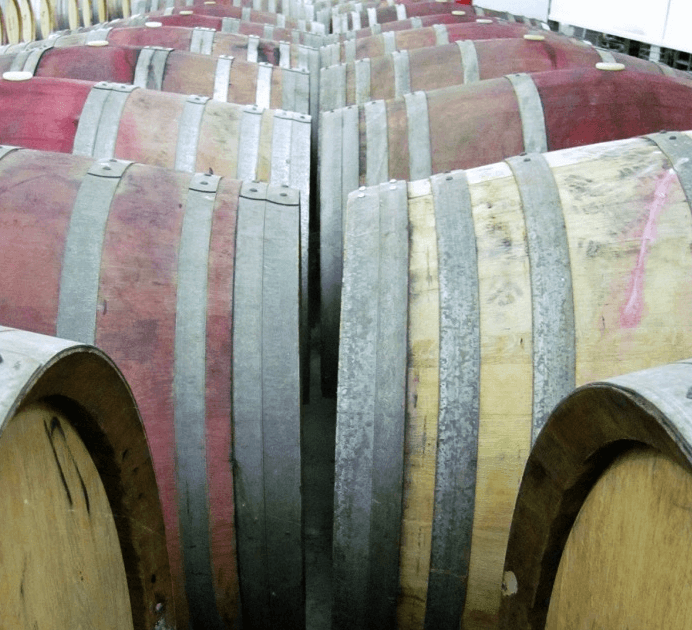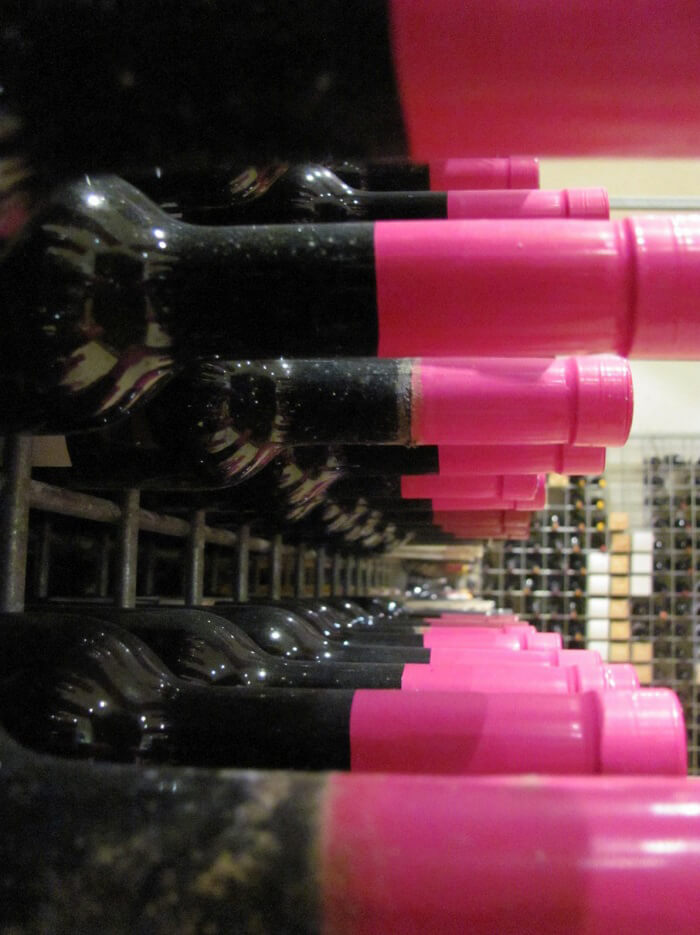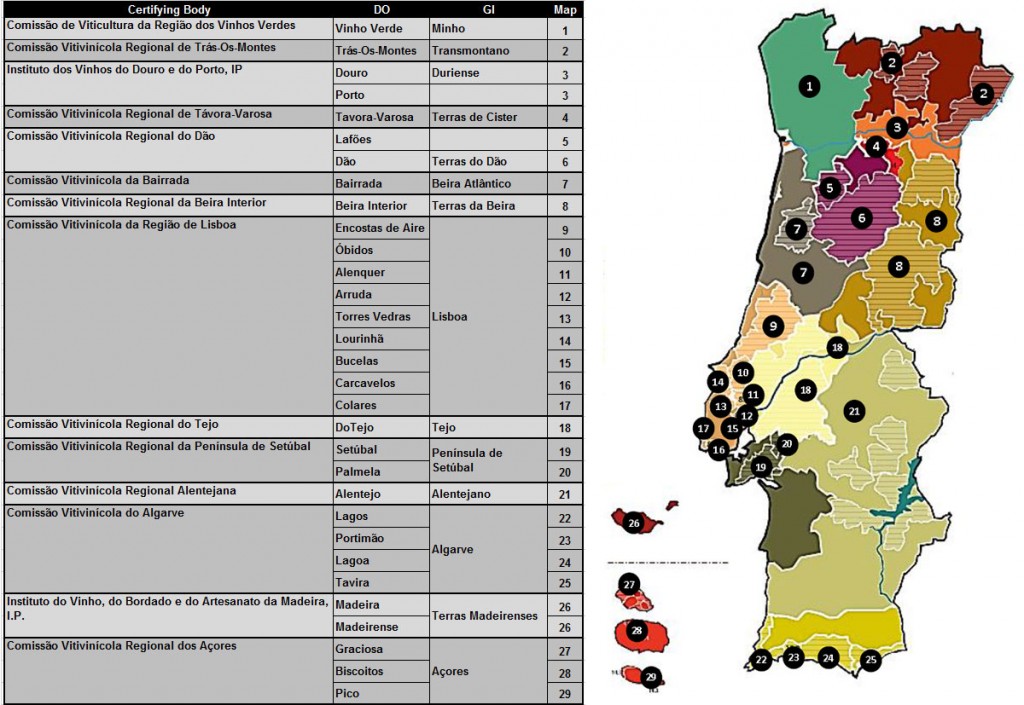Text Patrícia Leite
Portuguese wines have 31 Designations of Origin (DO) and 14 Geographical Indications (GI). To know this vast and unique collective heritage, we could begin by identifying these DO and GI and the entities that certify them. Before that, we review the concepts of DO and GI and of Certifying Body.
Legend
DO: Designation of Origin;
GI: Geographical Indication;
CB: Certifying Body;
Wine products: still wines, sparkling wines, semi-sparkling wines, liqueur wines, wine vinegars, wine spirits and grape marc spirits;
Wine products certification: validation process of the product conformity with the DO´s or GI´s requirements defined by the Certifying Body, which is pointed out, in the case of the bottled products, through the guarentee seal placed in the bottle.
Designation of Origin (DO) and Geographical Indication (GI)
In the wine sector, a DO is the geographic name of a region (or a traditional name, associated with a geographical origin or not), used to identify a wine product:
– whose quality or characteristics are essentially or exclusively due to a particular geographical environment with its inherent natural (e.g: climate, soil, grape varieties) and human factors (e.g: vinification techniques);
– originated from grapes exclusively from that region;
– and whose production occurs within that region.
The concept of GI differs from the concept of DO essentially in the following aspects:
– the quality, reputation, or other characteristics of the product are attributable to that geographical origin, but the human factors are not so relevant as in the DO;
– at least 85% of the grapes used come exclusively from that region, but not all the grapes, as in the DO.

Douro | © Blend All About Wine, Lda
In both concepts, the production shall occur within the delimited geographical area and “production” covers all the operations involved, from the harvesting of the grapes to the completion of the wine-making process, with the exception of any post-production processes.
In practical terms, a wine with DO is obtained exclusively from grapes of the demarcated region, but a wine with GI can be produced up to 15% with grapes from another origin than the GI geographical area.
Moreover, to be certified with DO wines must meet tighter requirements, namely concerning alcohol strength, grape varieties used, vinification methods, oenological practices, organoleptic characteristics (colour, clearness, aroma and flavour), among others.
About this matter, see also our previous article

© Blend All About Wine, Lda
The Certifying Bodies
In 2004 was created in the Portuguese wine sector the figure of Certifying Bodies (CB) to monitor the production and trade and to certify wine products with DO and/or GI.
A CB and the respective laboratory should be accredited by the Portuguese Institute for Accreditation (IPAC – Instituto Português de Acreditação) for the control and certification of wine products entitled to DO or GI (rule NP EN 45011) and for the physical-chemical tests involved in control and certification (rule NP EN ISO/IEC 17025).
Therefore, the existing entities in the sector, i.e. the Regional Wine Commissions, the Instituto dos Vinhos do Douro e do Porto, I. P. – the Douro and Port Wines Institute – and the Instituto do Vinho, do Bordado e do Artesanato da Madeira, I.P. – Institute of Wine, Embroidery and Handicraft of Madeira, had to apply the designation of EC to continue to certify the respective DO and / or IG.

© Blend All About Wine, Lda
Nine out of the fourteen entities in the sector are already accredited by IPAC and the remaining accreditation processes are underway, as reported by the IVV – Institute of Vine and Wine, IP in August 31, 2013 (See pdf)
About this matter, see also our previous article
Who certifies what?
In the table below, we indicate the existing DO and GI in Portugal and the respective CB. To each Demarcated Region corresponds a number of location on the map obtained at www.viniportugal.pt, which we reproduce here.

Table “Who certifies what?” © Blend All About Wine, Lda
Contacts
Regional Wine Commissions and other Certifying Bodies
Instituto da Vinha e Do Vinho I.P.



